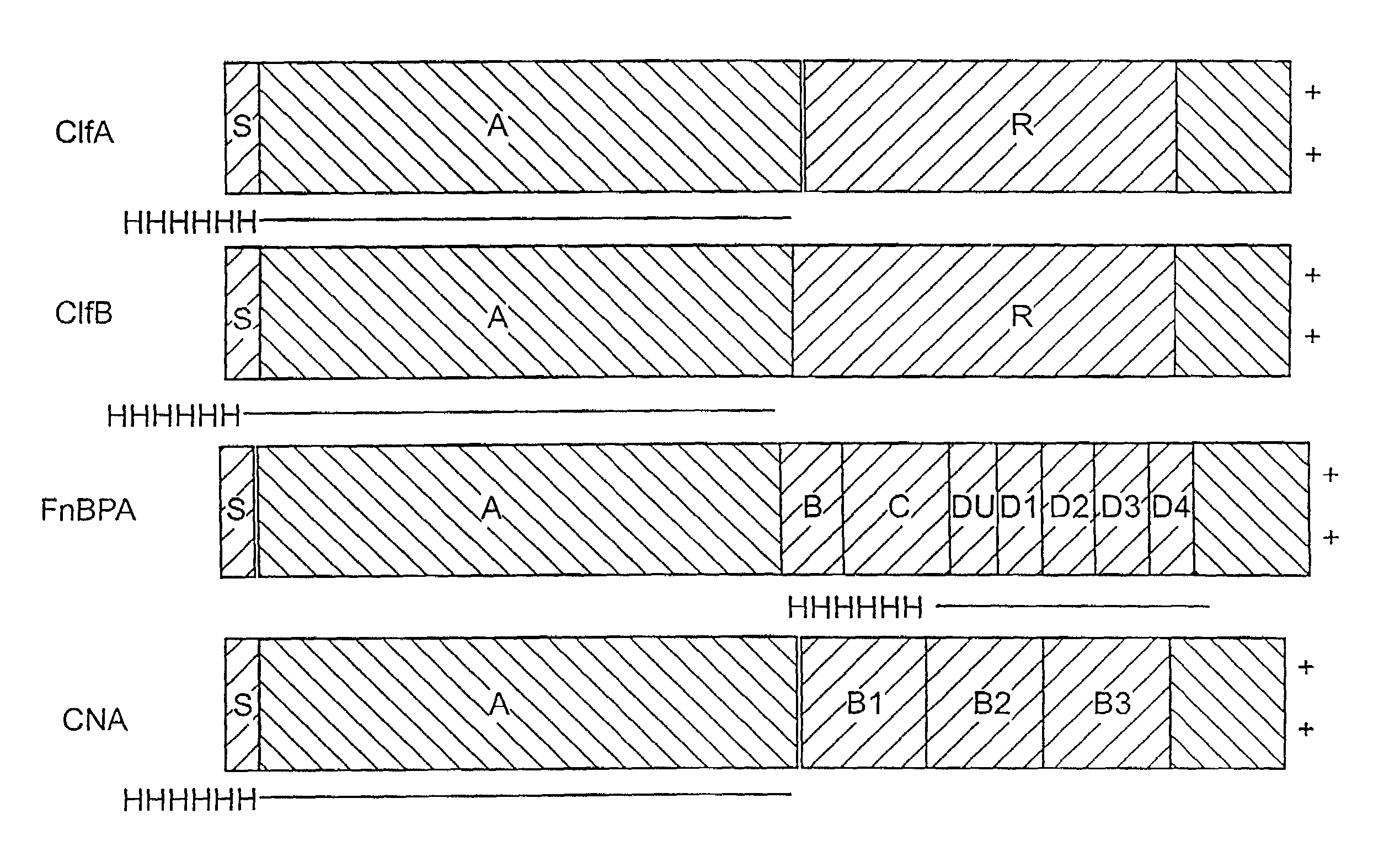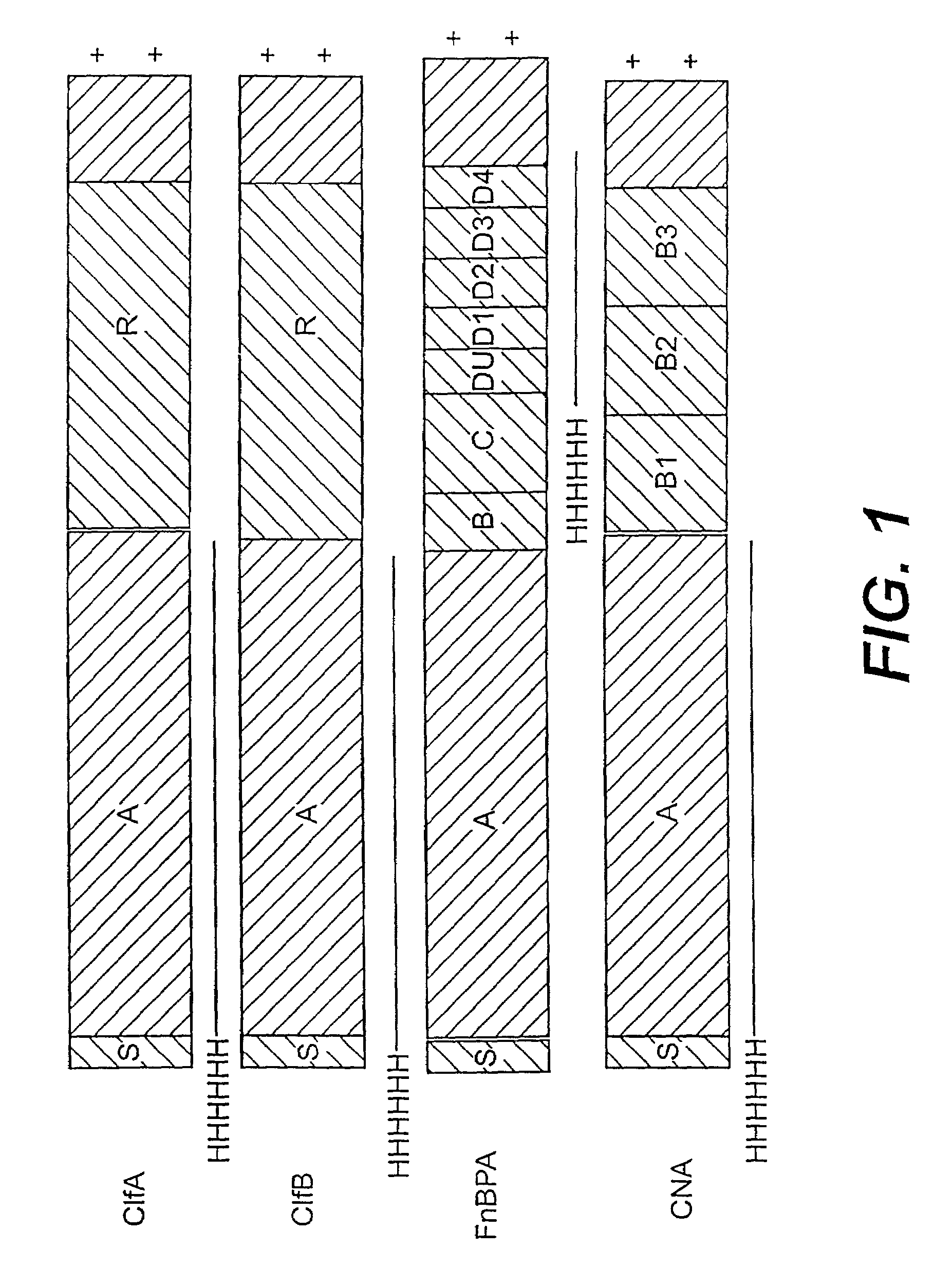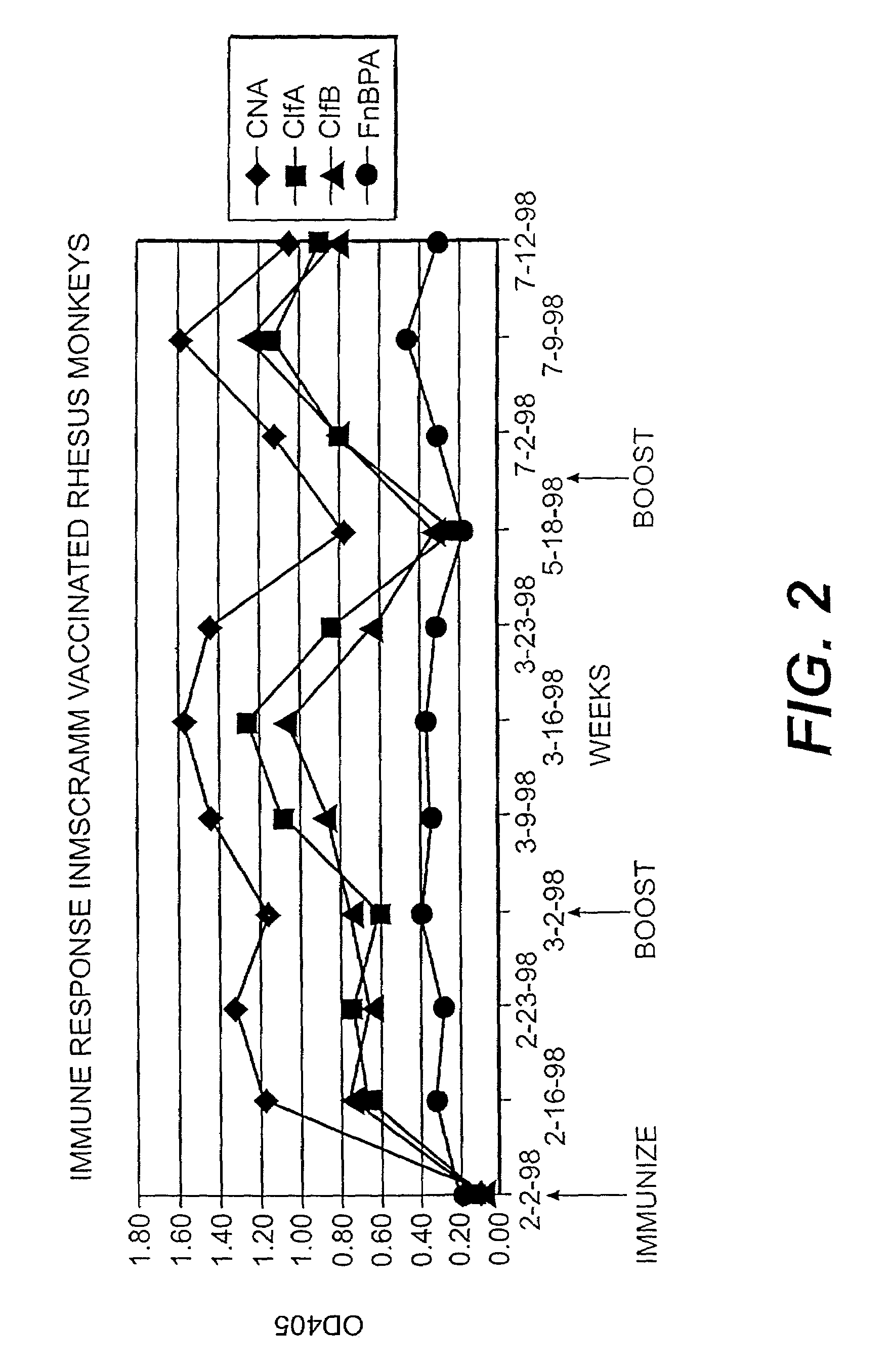Staphylococcal immunotherapeutics via donor selection and donor stimulation
- Summary
- Abstract
- Description
- Claims
- Application Information
AI Technical Summary
Benefits of technology
Problems solved by technology
Method used
Image
Examples
example 1
Preparation of Prototype Four Component MSCRAMM Vaccine
[0239]A series of recombinant proteins, representing domains from the collagen, Fn, and Fbg-binding MSCRAMMs (FIG. 1), were overexpressed in E. coli and affinity purified by metal chelating chromatography as previously described (see, e.g., Joh et al., Biochemistry. 33 (20):6086–6092, 1994; Patti et al., J. Biol. Chem. 270, 12005–12011, 1995; McDevitt et al., Mol. Micro. 11 (2):237–248, 1994; Ni Eidhin et al., Infect. Immun. Submitted, 1998). Used were the following: amino acids contained in the recombinant collagen-binding MSCRAMM expressed from CNA (M55, such as disclosed in co-pending U.S. patent application Ser. No. 08 / 856,253, incorporated herein by reference); amino acids contained in the recombinant fibrinogen-binding MSCRAMM expressed from clfA (Region A, such as disclosed in U.S. patent application Ser. No. 08 / 293,728, incorporated herein by reference); amino acids contained in the recombinant fibrinogen-binding MSCRAMM...
example 2
Example of Growing E. coli Strains for Production of Recombinant Proteins
[0240]Overnight cultures of E. coli JM101 or TOP 3 cells (Stratagene) harboring the recombinant plasmids were diluted 1:50 in 1 L of Luria Broth (Gibco BRL) containing 50 mg / mL ampicillin. E. coli cells were grown until the culture reached an OD600 of 0.5–0.8. Expression of the recombinant proteins was induced by adding IPTG to a final concentration of 0.2 mM. After a three hour induction period, cells were collected by centrifugation, resuspended in 15 mL of Buffer A (5 mM imidazole, 0.5 M NaCl, 20 mM Tris-HCl, pH 7.9) and lysed by passage through a French press twice at 20,000 lb. / in2. Cell debris was removed by centrifugation at 50,000×g for 10 min and the supernatant was passed through a 0.45 μM filter.
example 3
Purification of HIS6 Containing Recombinant Proteins Expressed from pQE-30 (Qiagen®; Qiagen Inc. Chatsworth, Calif.) or PV-4 Based Recombinant Plasmids
[0241]The recombinant proteins were purified by immobilized metal chelate chromatography, using a column of iminodiacetic acid / Sepharose® 6B Fast Flow (Sigma, St. Louis, Mo.) charged with Ni2+; (Porath et al. 1975; Hochuli et al. 1988). The HIS6 tagged proteins were purified by immobilized metal chelate affinity chromatography. More specifically, a column containing iminodiacetic acid Sepharose® 6B FF, connected to a FPLC® system (Pharmacia), was charged with 150 mM Ni++ and equilibrated with buffer A (5 mM imidazole, 0.5 M NaCl, 20 mM Tris, pH 7.9). After equilibration, the bacterial supernatant was applied to the column and the column was washed with 10 bed volumes of buffer A. Subsequently, the column was eluted with buffer B (200 mM imidazole, 0.5 M NaCl, 20 mM Tris, pH 7.9). The eluate was monitored for protein by the absorbance ...
PUM
| Property | Measurement | Unit |
|---|---|---|
| Mass | aaaaa | aaaaa |
| Mass | aaaaa | aaaaa |
| Electrical conductance | aaaaa | aaaaa |
Abstract
Description
Claims
Application Information
 Login to View More
Login to View More - R&D
- Intellectual Property
- Life Sciences
- Materials
- Tech Scout
- Unparalleled Data Quality
- Higher Quality Content
- 60% Fewer Hallucinations
Browse by: Latest US Patents, China's latest patents, Technical Efficacy Thesaurus, Application Domain, Technology Topic, Popular Technical Reports.
© 2025 PatSnap. All rights reserved.Legal|Privacy policy|Modern Slavery Act Transparency Statement|Sitemap|About US| Contact US: help@patsnap.com



